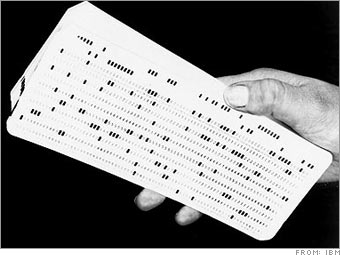
The IBM card, also known as the IBM punch card, was a standard for data storage and processing during the early days of computing. The cards were first introduced by IBM in the early 1920s and quickly became a widely used method for recording and storing data, from census data to payroll records and more.
Each card was made of a sturdy cardboard stock and measured 7 3/8 inches by 3 1/4 inches. The cards were pre-punched with rectangular holes, which could be used to encode alphanumeric data, as well as instructions for processing the data. The data was typically entered using a keypunch machine, which allowed users to punch holes in the card using a keyboard-like interface.
One of the key benefits of the IBM card was its versatility. The cards could be used for a wide range of applications, including data storage, processing, and transfer. They were also relatively easy to handle and transport and could be sorted and processed using a range of specialized machines.
The IBM card quickly became a standard for data processing, particularly in government and business applications. During the 1940s and 1950s, IBM punch cards were used extensively in the United States Census, as well as for processing and storing payroll data, medical records, and more.

As computing technology evolved, however, the limitations of the IBM card became increasingly apparent. The cards were relatively slow to process, and the data they contained was often difficult to access and manipulate. Additionally, the cards were prone to errors, particularly if they were damaged or mishandled.
Despite these limitations, the IBM card remains an important part of computing history. Its widespread use helped to pave the way for modern data storage and processing technologies, and its legacy can still be seen in many of the tools and techniques used in computing today. The IBM card also serves as a reminder of the importance of innovation and adaptation in the face of technological change and the ways in which seemingly simple tools can have a profound impact on the way we live and work.









